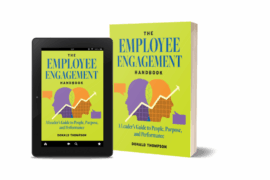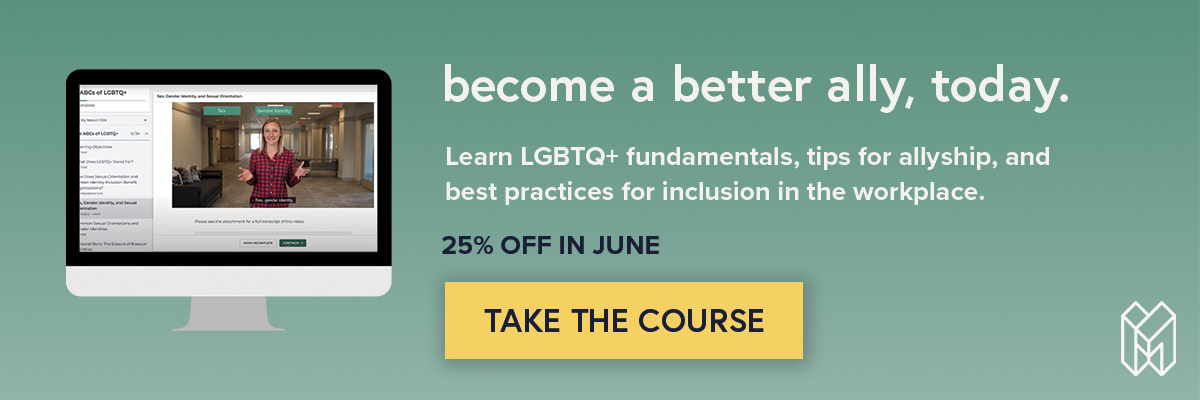Non-Binary People’s Day, which is celebrated every year on July 14th, raises awareness of the issues faced by non-binary individuals and celebrates the full spectrum of gender diversity and expression. The holiday was first celebrated on July 14, 2012 — a date that falls on the midpoint between International Men’s Day and International Women’s Day — and it has since become a global event.
Before we dive deeper, let’s review some key terms for understanding gender diversity:
- Gender identity is one’s concept of self as a man, woman, both, or neither.
- Gender expression is the external representation of one’s internal gender identity, which can be communicated through behavior, clothing, body characteristics, voice, etc. Gender expression may or may not conform to socially-defined behaviors and characteristics of what is “masculine” or “feminine.”
- People who are non-binary may not identify as exclusively man or woman, may identify as both man and woman, or may fall completely out of gender conformity, identifying as neither man nor woman. It’s important to note that being non-binary is an expression of gender, not sexuality. Non-binary people can identify as any sexual orientation which best fits themselves.
- Genderqueer, gender fluid, agender, and gender non-conforming are a few terms also used by the non-binary community.
Why should your organization pause to recognize Non-Binary People’s Day?
Openly acknowledging and celebrating employees’ diverse identities, cultures, and backgrounds can create a more inclusive environment and provide psychological safety within the workplace — both of which lead to greater collaboration, productivity, innovation, and business results.
Celebrating Non-Binary People’s Day can open healthy conversations between employees and build greater understanding of the uniqueness that is gender identity and gender expression. At the same time, promoting gender-inclusive language and breaking down gender-binary spaces can also promote a sense of belonging that leads to greater professional relationships.
So, how can you celebrate and honor this holiday?
Acknowledge Non-Binary People’s Day in your internal and external newsletters, on social media, and in company meetings and events. Share resources (like the ones linked below) to help your community learn more about gender identities and tips for active, intentional allyship. And, perhaps most importantly, show non-binary people that they are welcome and respected in your workplace by avoiding gender-binary language and by viewing your workplace through a non-binary lens.
Does your office space offer only “men’s” and women’s” restrooms? Do you often start meetings with “hello, ladies and gentlemen?” These small moments create a sense of exclusion by not acknowledging the full spectrum of gender identity.
Below, you’ll find five actions to take to create a more inclusive environment for non-binary individuals and all the folks who work in your organization.
1) Learn why pronouns are important to identity
Proper pronoun usage is an important part of making all people feel comfortable and welcome in any environment. Employers should encourage employees to introduce their pronouns if they feel comfortable doing so. Presenting your pronouns in any greeting or introduction is a great place to start.
Practice the phrase, “Hi! My name is … and my pronouns are …”. If it is relevant to the conversation, you can ask another person to share their own pronouns by saying “What are your pronouns?,” but you should avoid the phrase “preferred pronouns,” which implies that gender is a choice or preference.
Email signatures, social media, and other forms of employee communication are a great place to practice sharing your pronouns. You’ll often see these listed as parenthetical additions to a person’s name, such as (they, them, their), (he, him, his), or (she, her, hers). Facebook, Instagram, Zoom, Twitter, and many other social media platforms now provide a dedicated space for users to share their pronouns publicly.
2) Avoid non-inclusive, gender-binary language.
Meetings and other large group addresses are a natural place to practice using inclusive and genderless language. For instance, instead of saying “good morning, ladies and gentlemen,” try using “everyone,” “all,” “team,” or “folks.” And, when you hear someone use the gender-binary, as in “all men and women within the organization,” gently remind them — perhaps in private — that “all people” is a more inclusive word choice.
3) Know how to correct your mistakes.
If you misgender someone or make a pronoun error, give yourself grace. Remember that inclusion is an ongoing journey, and what’s most important is that we own our mistakes, commit to continued learning, and correct them when we can. When a pronoun error happens, it is important that both parties who are involved in the conversation assume each other’s positive intent. Apologizing quickly and using the correct pronouns is a great way to practice active allyship.
4) Create all-gender bathrooms.
Traditional office spaces included labeled bathrooms with binary terms like “men” and “women”. For non-binary people, having to choose between two gendered bathrooms can feel disheartening and deterring. Shifting your workplace to include at least one all-gender bathroom is a great way to increase inclusion and belonging.
5) De-gender your dress code.
Workplace dress codes can sometimes enforce gender stereotypes and discrimination, leading to a greater sense of exclusion. Employers should promote professional wear that is appropriate to the work environment, while avoiding enforcement of any gender stereotypes. For instance, that women should wear skirts and dresses, or that men should not. Allow employees to make their best judgement on what is or is not professional wear, and open the conversation to non-binary folks for their feedback and input on your exisiting dress code.
Companies, organizations, and individuals who take the time to celebrate diversity, community, and holidays like Non-Binary People’s Day demonstrate support, allyship, and inclusion to their employees and clients. It is important to understand that DEI learning is a perpetual practice, not a one-off achievement. Each person’s journey — just like each person’s identity — will be unique.
Featured Resources:
- LGBTQIAP+ Inclusivity Quick Guide from The Diversity Movement
- LGBTQ+ Organizational Readiness Assessment from The Diversity Movement
- Transgender and Non-Binary People FAQ from the Human Rights Campaign
- A Guide to Allyship from The Trevor Project
- Tips for Non-Binary Inclusion from the LGBT Foundation
- 10 Ways to Step Up as an Ally to Non-Binary People from the Stonewall Organization
Belle Williams is a queer fitness coach, ally, and graduate student, studying sport and exercise psychology at East Carolina University. Belle is currently investigating the intersection of gender identity and physical activity, in hopes of reducing chronic disease in transgender and non-binary communities.







